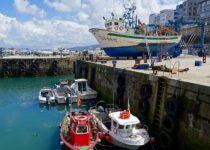The Five Main Components of Restoration
Ecological restoration, or the process of restoring degraded or damaged ecosystems, is a key component of any recovery effort. The goal is to return the ecosystem to its original or pre-disturbance condition. This requires a systematic approach. This effort’s components include adaptive management, planning, and performance assessment.
The best way to accomplish this is to understand the nature of disturbance and the impact environmental stressors have on an ecosystem. This knowledge is important because it can help minimize anthropogenic impacts.
5 Main Components of Restoration
In the case of coastal marine ecosystems, rapid rates of degradation are a red flag suggesting that a restoration project is needed as soon as possible 911 Porsche Restorations. Adaptive management involves incorporating basic information about the ecosystem over time and adjusting restoration plans in response to changing circumstances.
Another key part of an effective restoration strategy is monitoring. Restoration ecologists are often confronted with a lack of data that is relevant to their work. Monitoring can be a challenging and complicated task. However, some tools can be employed to gather and analyze the necessary data. These tools can be found in the following three categories:
- the use of ecological offset policies to compensate for biodiversity losses,
- the establishment of markets for ecosystem services
- the monitoring of restored sites.
The first step to successful restoration is to identify the right site. The site selection phase involves examining the historical and present ecological conditions of the region. It also involves identifying potential obstacles to restoration. For instance, the presence of large waves or hydrological instability could inhibit the restoration of a mangrove tree.
The next step in the restoration process is the construction of an artificial habitat or the planting of seeds. An ideal restoration project will incorporate both techniques. Active restoration, like the transplanting of coral colonies, has been shown to be more successful than outplanting coral larvae. Passive restoration, such as removing environmental stressors, may also have a major role to play.
Although the restoration of coastal marine ecosystems may seem to be a daunting task, there is no denying that it is essential. In the past few centuries, the severity of human impact on the world’s ecosystems has increased dramatically. Many species are facing local extinction as a result of habitat loss. Increasing extinction rates and biodiversity loss suggest a restoration effort is in order.
A comprehensive restoration plan may also include the implementation of the five key elements of an effective restoration program. Specifically, these elements include: a) adaptive management, b) a monitoring program, c) a performance assessment, d) an appropriately funded and implemented project, and e) a well-designed communication plan.
While the restoration of coastal marine ecosystems may seem daunting, the efforts have been documented in the past. Large-scale efforts to restore mangroves have been documented as far back as the 1950s, while seagrass and oyster reef restoration projects have been active for more than a century. Despite these advances in the field, a number of challenges still remain.


